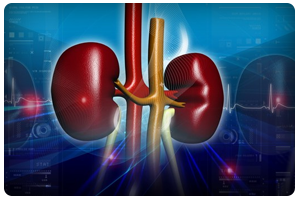- 07710 105 356
- darrellallen.privatepractice@nhs.net
AREAS OF EXPERTISE

Kidney Stones
Introduction
Kidney stones are stone-like lumps that can develop in one or both of the kidneys. The medical name for stones in the kidneys is nephrolithiasis. If the stones cause severe pain, this is known as renal colic.
Symptoms of kidney stones
Small stones may be passed out painlessly in the urine and may even go undetected. However, it is fairly common for a stone to block part of the urinary system, such as:
READ MOREHaematuria
Introduction
Finding blood in your urine can be very frightening and must be investigated by a doctor but it's not usually a sign of anything life-threatening
If you notice bright red blood in your urine or if your urine has turned red or brown because it has blood in it, see your doctor.
Sometimes urine may contain only a small amount of blood invisible to the naked eye and is only apparent when a urine test is carried out for something else. This still needs to be investigated by your doctor as healthy urine should not contain any detectable amounts of blood.
READ MORE

Prostate Problems
Introduction
Prostate disease is a general term used to describe a number of medical conditions that can affect the prostate gland.
The prostate gland
The prostate gland is a small gland only found in men. It opens into the urethra (the tube that carries urine from the bladder to the penis) and sits just below the bladder and vas deferens (a pair of ducts through which sperm passes before ejaculation).
READ MOREUrinary Tract Infections
Introduction
Urinary tract infections (UTIs) are very common. They can be painful and uncomfortable but they usually pass within a few days or can be easily treated with a course of antibiotics.
UTIs are more common in women than in men. It's estimated half of all women in the UK will have a UTI at least once in their life and 1 in 2,000 healthy men will develop one each year.
Children can also get UTIs, although this is less common. Read more about UTIs in children.
READ MORE

Erectile Dysfunction
Introduction
Erectile dysfunction (ED), also known as impotence, is the inability to get and maintain an erection. Erectile dysfunction is a very common condition, particularly in older men. It is estimated that half of all men between the ages of 40 and 70 will have it to some degree.
When to see a doctor?
See your doctor if you have erectile dysfunction for more than a few weeks. They will assess your general state of health because the condition can be the first sign of more serious health conditions, such as heart disease (when the heart’s blood supply is blocked or interrupted).
READ MORE




